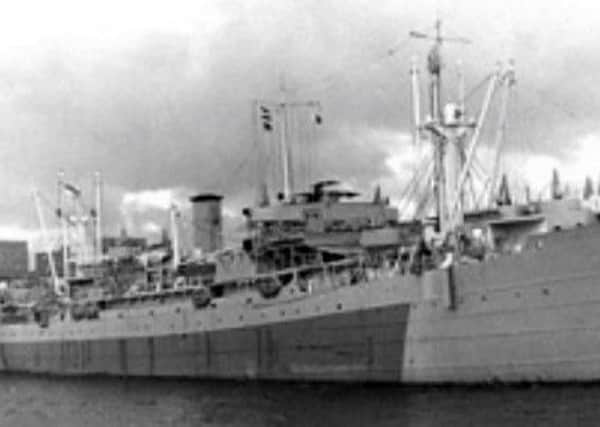On The Waterfront: The history of HMS Portland Bill


This was the case with HMS Portland Bill, which came to Sunderland for decommissioning before being converted for merchant navy service on the River Tyne.
One of the Canadian Victory-type ships, she had been constructed for the British Government in 1945 by Vancouver’s largest shipyard, Burrard Drydock Co Ltd.
Advertisement
Hide AdAdvertisement
Hide AdShe was one of several 8,580 tons deadweight maintenance ships built by Burrard for the Royal Navy. As she was not commissioned until October 31, 1945, she entered service too late to be of any value to the war effort, although she had been intended for the Pacific theatre.
By 1950, she was employed as a Reserve Fleet accommodation vessel at Harwich, Essex, but soon became surplus to requirements when relieved by HMS Mull of Kintyre.
After being moved to Sheerness, it was announced that HMS Portland Bill had been purchased from the Admiralty by North Shields-based Joseph Robinson and Sons, trading as Stag Line, for conversion into a cargo ship.
Following her arrival at arrived at Corporation Quay on January 17, 1951, she moved to East Quay, Hendon Dock, where workmen began removal of her ballast, deck and Admiralty machinery.
Advertisement
Hide AdAdvertisement
Hide AdThe ballast comprised some 3,500 tons of barytes - better known as barium sulphate – mined in the Rocky Mountains, which it was hoped to sell for commercial use as a paint extender.
The first job for three of the four electric luffing cranes transferred to the newly reconstructed quay from East Quay South was to remove her ballast by grab.
On February 27, 1951, sparks from an acetylene burner caused a small fire on board, the outbreak being confined to some windsails in the engine room used for ventilation.
With preliminary work being completed at Sunderland, the former maintenance ship was towed to the Tyne by France, Fenwick Tyne and Wear Co Ltd tugs Beamish and Hendon on March 29, 1951.
Advertisement
Hide AdAdvertisement
Hide AdAfter arriving at Mercantile Dry Dock at Jarrow, ship repairers completed her conversion into a cargo carrier.
Sailing under the new name of Zinnia, the 441-foot six-inch long tons vessel sailed on sea trials on June 7, 1951. With a gross tonnage of 7,292, the ship had retained her original triple-expansion steam engine manufactured by Dominion Engineering Works, Montreal.
She was the second of three Stag Line ships to carry the name. The fleet was well known and easily recognised by its house flag and funnel colours of red background with a white stag superimposed.
Renamed Chrysopolis on being sold to Astrosuerte Cia Nav of Liberia in 1964, she was scrapped at Kaohsiung, Taiwan, the next year.